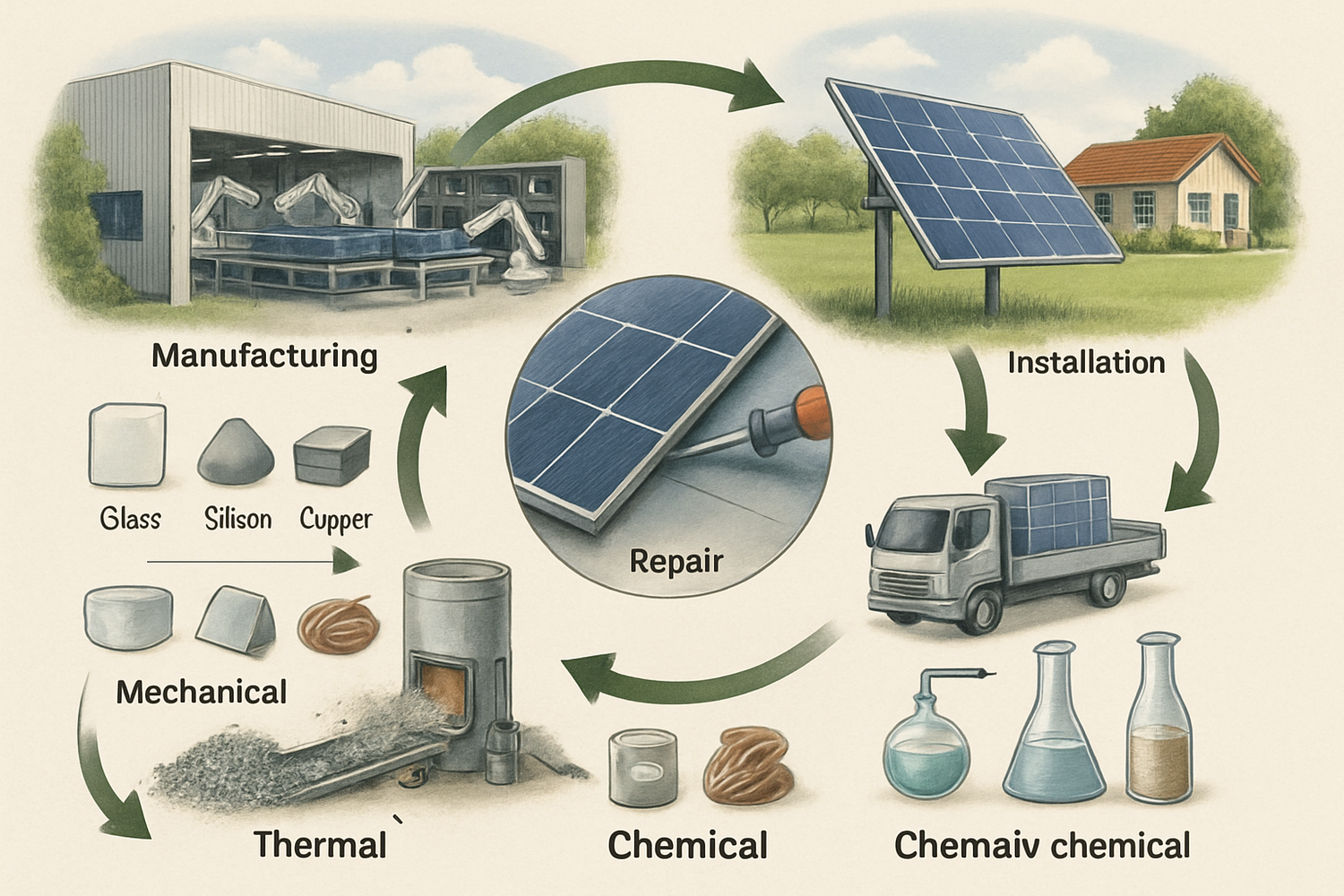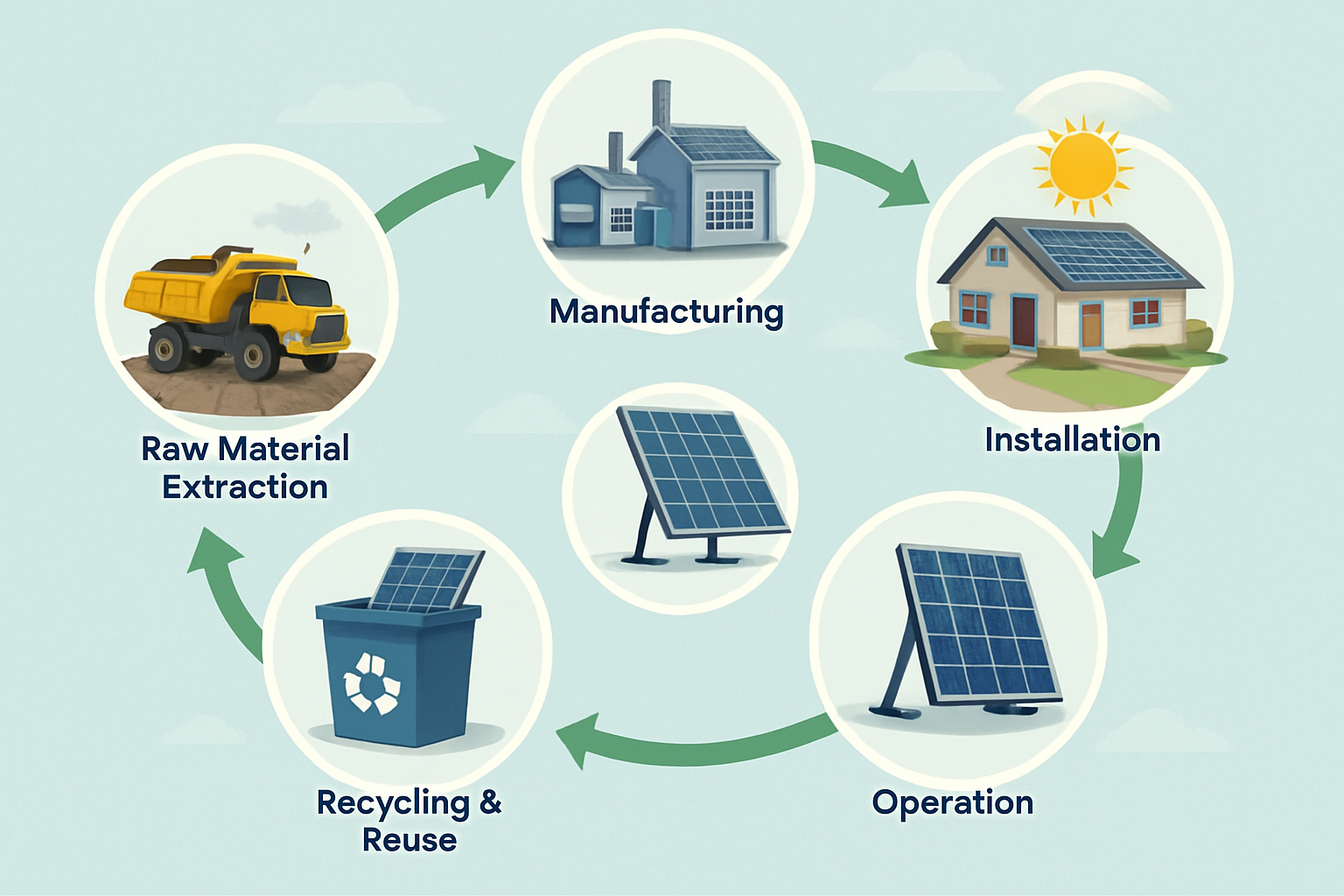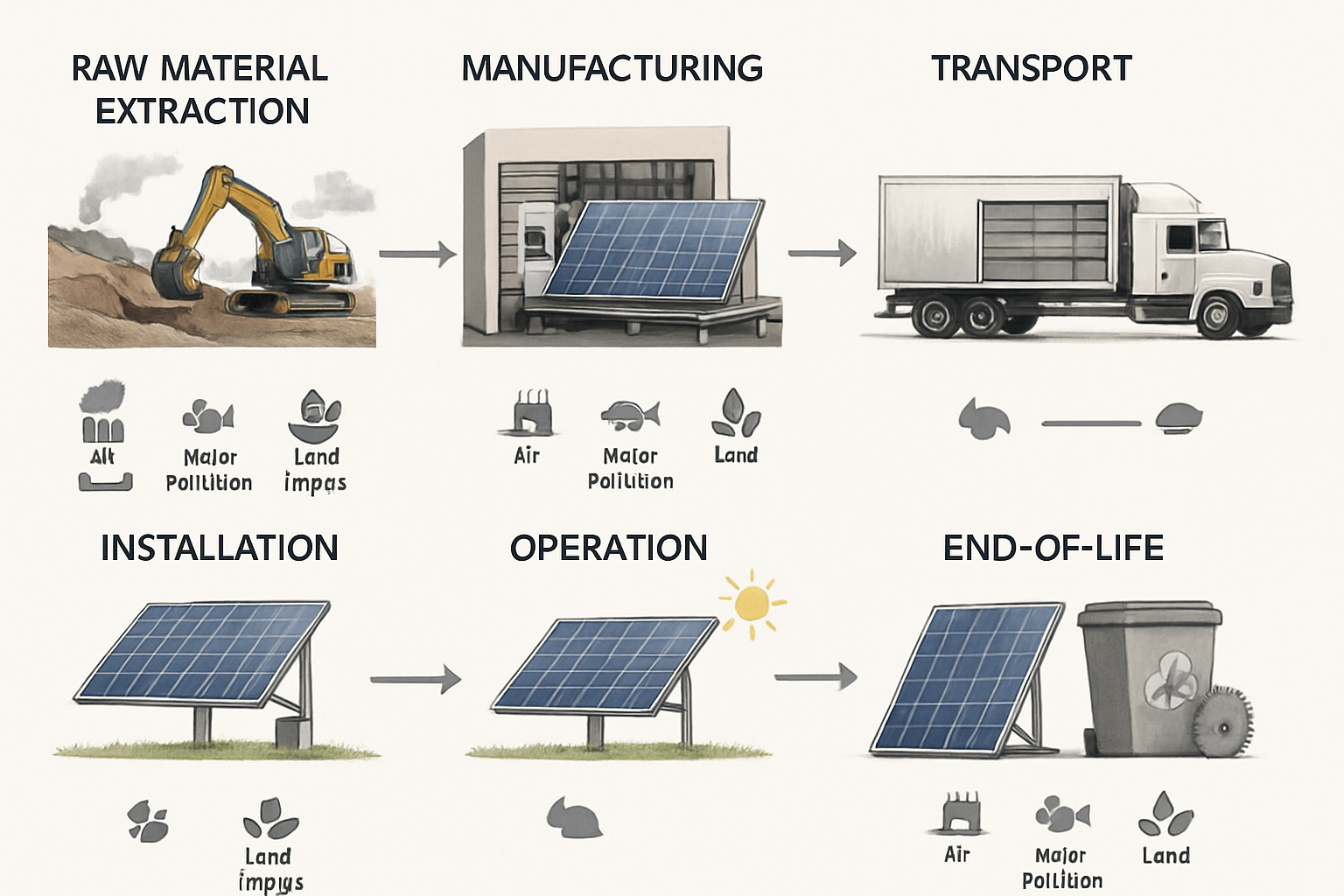Solar energy is transforming how we power our lives, offering a clean and abundant resource. As solar installations expand globally, we face a new, important challenge: managing photovoltaic (PV) modules at the end of their operational life. This guide will help you understand the critical processes of PV module recycling and reuse, ensuring solar energy remains a truly sustainable solution.
The Imperative for a Circular Solar Economy
The rapid growth of solar power means a significant increase in end-of-life PV modules in the coming decades. Projections indicate that by 2050, the world could see up to 78 million metric tons of solar panel waste . This presents both an environmental challenge and a substantial economic opportunity.
Environmental Responsibility and Resource Preservation
A linear “take-make-dispose” approach for solar panels would lead to increasing landfill volumes and the depletion of valuable raw materials . Solar panels contain materials like glass, aluminum, silicon, copper, and silver . Disposing of these materials without recovery wastes the energy embedded in their production and necessitates new resource extraction. Embracing a circular economy for solar energy minimizes waste, reduces reliance on new raw materials, and lowers the overall carbon footprint of solar technology .
Unlocking Economic Value from End-of-Life Modules
The materials within decommissioned solar panels hold significant economic value. Experts estimate that recovered materials could be worth approximately $15 billion by 2050 . Recovering these materials can create new revenue streams, enhance supply chain stability, and generate jobs in recycling and remanufacturing industries . This transformation turns what might be considered waste into a valuable resource for future energy systems.
Extending PV Module Life: Reuse and Repair Strategies
Before considering recycling, extending the operational life of PV modules through reuse and repair offers substantial environmental benefits and economic advantages. This approach delays the need for new manufacturing and reduces immediate waste streams.
Maximizing Operational Lifespan Through Maintenance
Regular maintenance is key to ensuring solar panels operate efficiently for their designed lifespan of 25-30 years, or even longer . This includes cleaning panels, inspecting electrical connections, and verifying structural integrity. Timely repairs can address performance issues, preventing premature decommissioning .
Second-Life Applications for Functional Modules
Even if a PV module's performance degrades slightly, it may still be suitable for less demanding applications. Panels that no longer meet the efficiency requirements for grid-tied systems can find a second life in off-grid solutions, remote charging stations, or smaller-scale projects where maximum output is not critical . This redeployment significantly extends the product's useful life and reduces waste. While the profitability of reuse is currently more guaranteed for rooftop PV under certain conditions, it offers the best environmental impact in all cases, according to a report by the International Energy Agency Photovoltaic Power System Programme (IEA-PVPS) .

Unlocking Value: Advanced PV Module Recycling Techniques
When reuse or repair is no longer viable, effective recycling becomes paramount. PV modules are complex assemblies, and recovering their valuable materials requires specialized processes.
Material Composition of PV Modules
Understanding what makes up a solar panel is the first step in efficient recycling. The typical composition of a crystalline silicon PV module is approximately:
- Glass: 70-76%
- Aluminum (frame): 8-15%
- Polymer (encapsulant, backsheet): 10%
- Silicon (cells): 3-5%
- Other metals (copper, silver, tin, lead, cadmium): 1%
These materials are often bonded together, presenting challenges for separation and high-purity recovery .
Overview of Recycling Processes
Modern recycling facilities employ a combination of mechanical, thermal, and chemical methods to reclaim materials from end-of-life PV modules. Current technologies are capable of recycling 95-99% of PV panel materials, including glass, aluminum, silicon, and copper wires .
Mechanical Recycling
This initial stage involves physical separation. Workers or automated systems first remove the aluminum frame and the junction box, which are relatively easy to recycle . The remaining module is then often shredded or crushed. This process separates bulk materials like glass and plastic from the smaller cell components .
Thermal Processing
After mechanical separation, thermal treatments are used to deal with the encapsulating polymer layer, typically ethylene-vinyl acetate (EVA). Modules are heated to temperatures around 500-600°C, causing the EVA to vaporize or burn off . This allows for the easier separation of glass and silicon cells. The byproducts of this thermal process can sometimes be repurposed as a heat source .
Chemical Processing
For high-ppurity material recovery, particularly silicon and precious metals, chemical processes are essential. Acid baths or hydrometallurgy are used to remove impurities from silicon wafers, allowing them to be purified and reused in new solar cells . These chemical methods can also selectively extract valuable metals like silver, indium, and gallium .
| Component | Approximate Weight % | Recycling Method(s) | Recovered Material Use |
|---|---|---|---|
| Glass | 70-76% | Mechanical, Thermal | New glass products, building materials |
| Aluminum Frame | 8-15% | Mechanical | New aluminum products, construction |
| Silicon | 3-5% | Thermal, Chemical | New solar cells, electronics |
| Copper | ~1% | Mechanical, Chemical | Electrical wiring, other metal products |
| Silver | <0.1% | Chemical | Electronics, jewelry |
Driving Change: Policy and Industry Initiatives
Effective end-of-life management for PV modules requires a robust framework of policies and industry commitment. These initiatives help overcome cost barriers and foster the necessary infrastructure for a circular solar economy.
Extended Producer Responsibility (EPR)
Extended Producer Responsibility (EPR) schemes are a key policy instrument. They place the responsibility for a product's end-of-life management, including collection and financing of recycling, directly on the manufacturers . The European Union's Waste Electrical and Electronic Equipment (WEEE) Directive, for example, has included PV panels since 2012, setting specific collection and recycling targets . This encourages manufacturers to design more recyclable products and invest in recycling infrastructure .
Global Regulatory Landscape and Future Outlook
While the EU leads with comprehensive EPR frameworks, other regions are developing their approaches. In the United States, there is no federal law specifically addressing solar panel waste, but some states, like Washington, have implemented their own EPR programs . The U.S. Environmental Protection Agency (EPA) is also developing a proposed rule to add solar panels to universal waste regulations, aiming to improve recycling and management . These evolving regulations are crucial for establishing clear guidelines and incentivizing sustainable practices worldwide .
Paving the Way for a Sustainable Solar Future
The transition to a truly circular solar economy requires continuous innovation and collaboration across the industry. Designing PV modules with their end-of-life in mind, known as 'Design for Recycling' (DfR), is a powerful approach. This involves creating panels with modular components that are easy to disassemble, using standardized mounting systems, and clearly labeling materials for efficient sorting .
Our company is committed to advancing reliable and scalable energy solutions. We focus on developing integrated energy storage systems (ESS) that combine high-performance LiFePO4 batteries with hybrid inverters and solar panels. These systems not only provide energy independence but also contribute to extending the overall value and lifespan of solar installations. By supporting the longevity of PV systems and promoting responsible end-of-life practices, we help ensure a sustainable energy future for homes, farms, and businesses.
Frequently Asked Questions
What is the primary goal of PV module recycling?
The primary goal of PV module recycling is to recover valuable materials like glass, aluminum, silicon, copper, and silver from end-of-life solar panels. This reduces waste, conserves natural resources, minimizes environmental impact, and creates economic opportunities by reintroducing these materials into the manufacturing supply chain .
Are all solar panels considered hazardous waste?
No, not all solar panels are classified as hazardous waste. The classification can depend on the panel's specific composition and the regulations in place in a particular region. Some panels may contain small amounts of hazardous materials like lead or cadmium. In the U.S., the EPA is working on adding solar panels to universal waste regulations to improve their management .
How can I ensure my solar panels are recycled responsibly?
To ensure responsible recycling, look for certified recycling programs or companies that specialize in PV module recycling. In regions with Extended Producer Responsibility (EPR) schemes, manufacturers are often responsible for the take-back and recycling of their products. You can also consult local waste management authorities for guidance on proper disposal and recycling options in your area .
What are the economic benefits of solar panel recycling?
Solar panel recycling offers significant economic benefits by recovering valuable materials that can be sold or reused in new products. This reduces the need for virgin raw materials, lowers manufacturing costs, and can create a substantial market for recovered materials, estimated to be worth billions of dollars by 2050 . It also fosters new industries and job creation in the recycling sector .
What is 'Design for Recycling' (DfR) in the context of PV modules?
'Design for Recycling' (DfR) is an approach where PV modules are designed from the outset with their end-of-life in mind. This means using materials that are easier to separate and recover, employing modular components for simpler disassembly, and clearly labeling materials. DfR aims to make the recycling process more efficient and cost-effective, facilitating a circular economy for solar products .





Leave a comment
All comments are moderated before being published.
This site is protected by hCaptcha and the hCaptcha Privacy Policy and Terms of Service apply.